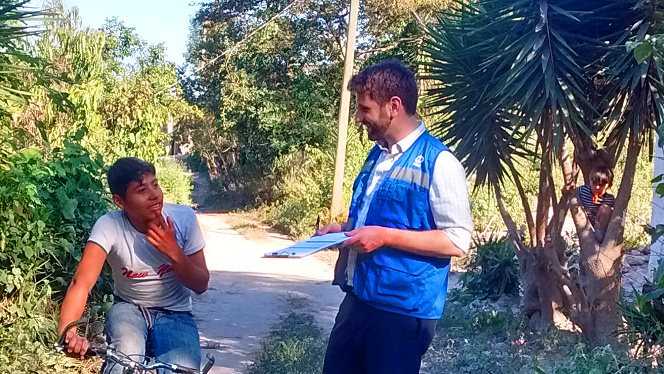Let us know what type of content you'd like to see more of. Fill out our three question survey.
Mobiles in Central America: Digital Insights Honduras, Part 2
Apr 27, 2016

The author interviews a youth in the mountains above La Paz
Esta entrada también está disponible en español.
Social Media and Messaging Choices
Recently I wrote about my experience interviewing at-risk youth* in Honduras about their mobile phones and how they use them. If you missed that blog, catch it here: Mobiles in Central America: Digital Insights Honduras, Part 1 . Mobile messaging and social media are incredibly popular among Honduran youth. More than 70 percent of the at-risk young people in Honduras who we interviewed had smartphones, and almost every single one who had a smartphone used WhatsApp. Facebook is even more ubiquitous. The message is this: anyone—from the Honduran government to development organizations like USAID and implementing organizations—who wants to engage with Honduran young people must meet them on their native platforms of communication. These days that means social media and messaging apps.
Key Insights
- Awareness of messaging apps is high across the board, but use is much more selective. Ninety-five percent of those we interviewed were aware of both Facebook and WhatsApp, 88 percent knew Twitter, and 71 percent knew Line. The picture for actual usage is very different. (Click the radio buttons at the top of the graph to switch from awareness to useage.) Facebook and WhatsApp dominate, with 80 percent and 70 percent penetration among those we interviewed, respectively. Twitter was a distant third with 19 percent, and Line had 12 percent usage.
- Similarly, in terms of average minutes used each day, WhatsApp (142) and Facebook (103) dominate with Twitter (13) again a distant third.
- WhatsApp and Facebook are the apps most people say they use the most. Based on the stats above, this is not a surprise. When asked to choose, 47 percent of users identified WhatsApp as the app they use most, while 30 percent said the same of Facebook. 1 percent mentioned Twitter.
Questions? Comments? Want to hear more? Please share below, or tell us on Twitter at @DAIGlobal or #DigitalDAI!
The author would like to thank the great people of Plan Honduras, the Organization for Youth Empowerment, and the Centro de Desarrollo Humano for their assistance in carrying out Digital Insights research.
* Honduran Youth are considered at-risk if the community where they live shows high levels of domestic violence, drug use, a significant gang presence, or other major risk factors. We surveyed people from ages 15 to 33. See Mobiles in Central America: Digital Insights Honduras, Part 1 for more demographic information